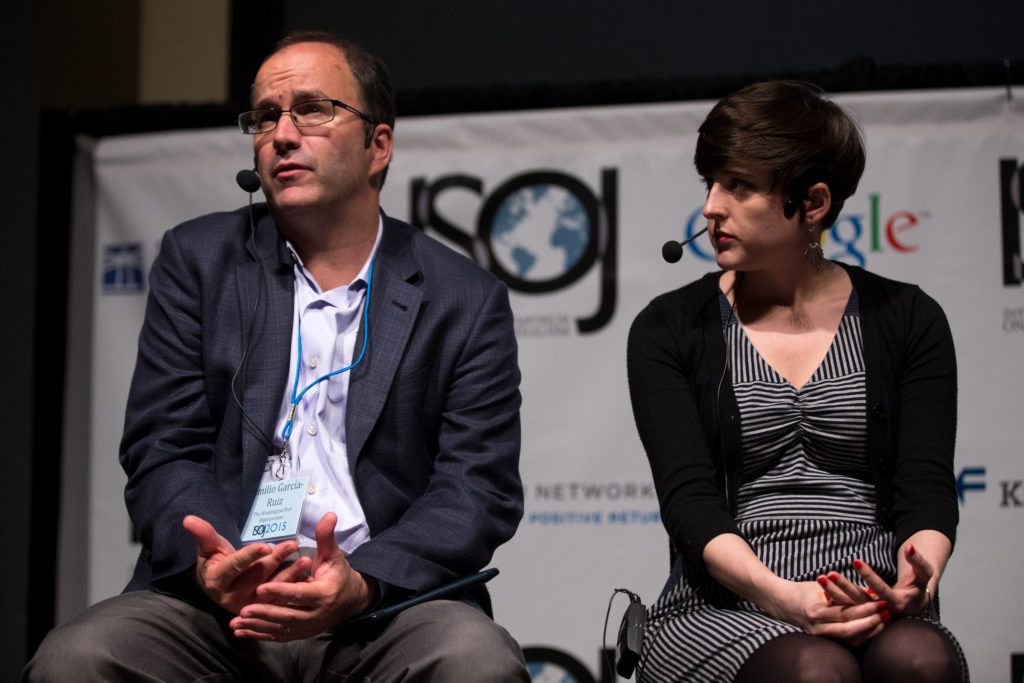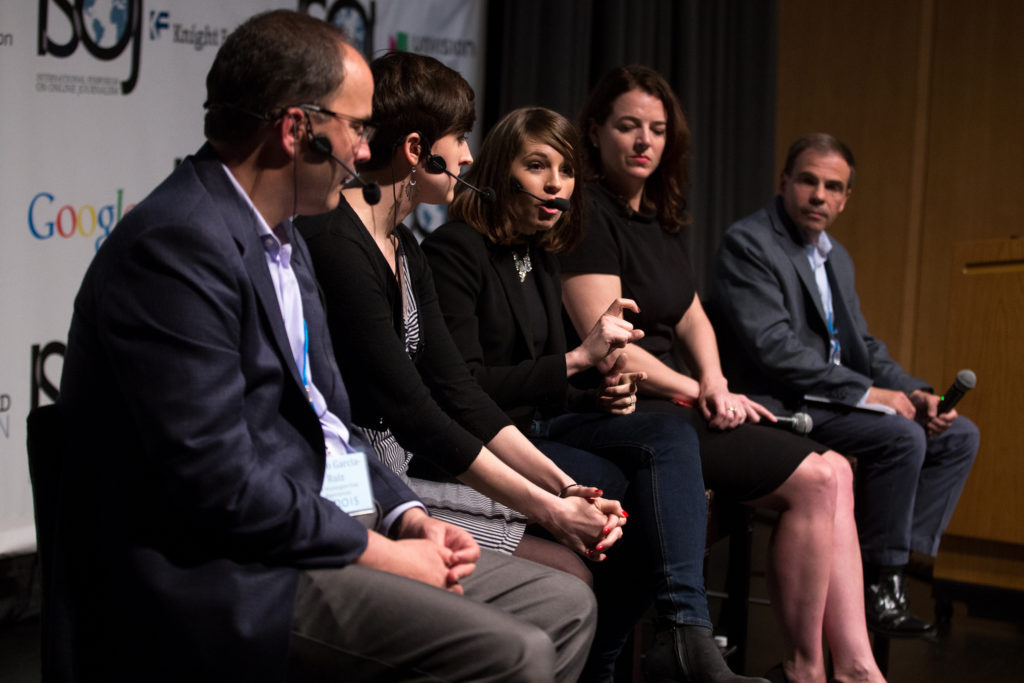April 18, 2015 | Engagement
Collaboration and framing help develop an audience, editors tell ISOJ audience
Media engagement experts stressed the importance of collaboration and framing during an afternoon session Friday at the International Symposium on Online Journalism(ISOJ) about developing an audience.
Editors from The Washington Post, The New York Times, Mashable and The Vergediscussed how they reach out through social media, produce content on new platforms and develop interactive content to draw in news consumers.

Emilio Garcia-Ruiz, managing editor for the digital, video and presentations departments at The Washington Post, told conference-goers to “include the social media team from the beginning of the content creation process.”
In tackling a story about racial issues, he said The Post needed “a new story form.”
“We can’t do this with text,” Garcia-Ruiz said.
What they came up with was a customizable video playlist of people having conversations about their experiences and thoughts surrounding “The N-word.” Viewers were then presented with the opportunity to add to the conversation in the comment section.
In another example, Garcia-Ruiz said The Post usually received “no social action on a story about health care,” so they turned the story into a video game.
Stacy Martinet, chief marketing officer of Mashable, said “collaboration is a must” between social media managers, reporters and developers in the newsroom.
“There’s no time for infighting,” Martinet said. “You have to equally obsess over data and creative.”
Helen Havlak, engagement editor with The Verge, said creating content that caters to the platform where it will be shared is important as well. She showed an example of a video that they changed to fit the Facebook audience by making it shorter and adding text and a voiceover.
“Think about where content is going,” Havlak said. “That needs to impact everything you do.”

Cynthia Collins, the social media editor of The New York Times, echoed that sentiment and said her team takes risks to command attention and connect with audiences.
“If a story isn’t generating the traction we would like … let’s see how we can frame it differently,” Collins said.
ISOJ kicked off Friday with a lesson from a Google executive on how to better understand and monetize the everyday “moments” consumers spend online.
This 16th annual edition of ISOJ, which continues Saturday, is being livestreamed in English here, and in Spanish here.
ISOJ 2015: Art of Audience Development Q&A, from Knight Center on Vimeo.

